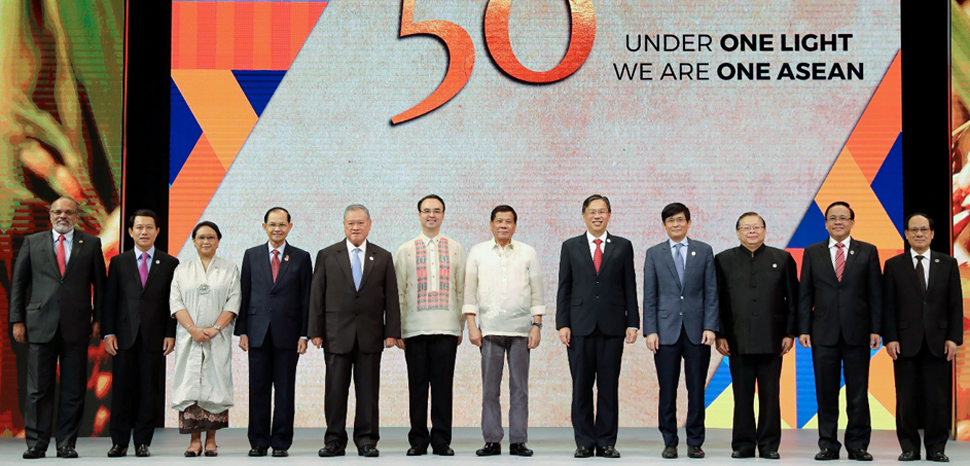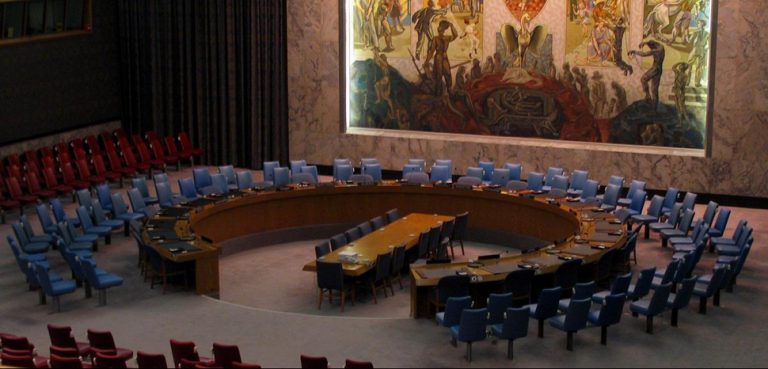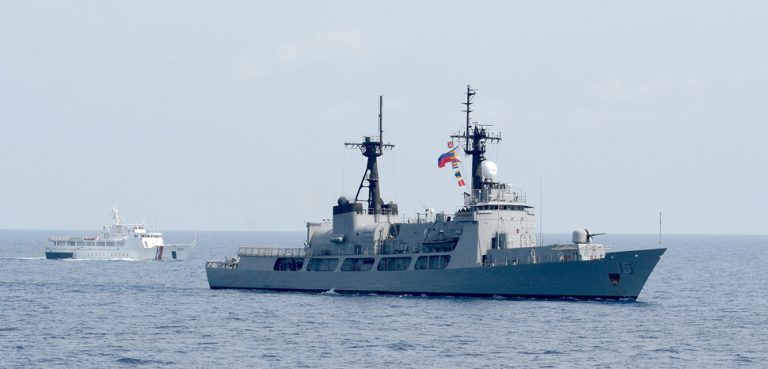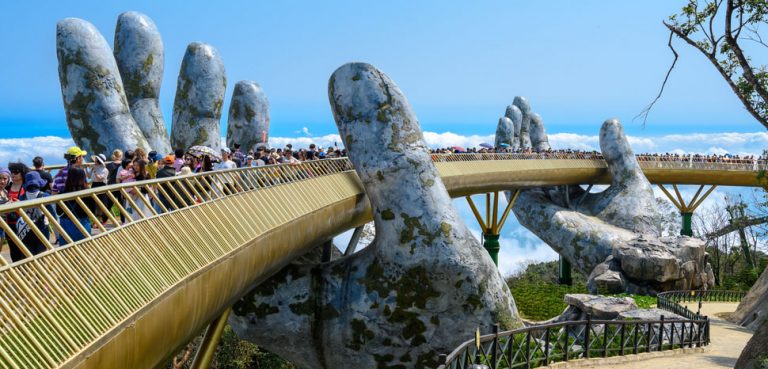Indonesia has been considered as the de facto leader of the Association of Southeast Asian Nations (ASEAN) based on historical assumptions; however, the current COVID-19 pandemic has exposed Indonesia’s weakness regarding its role as a regional leader. On the other hand, Vietnam has been making great strides in projecting itself as an effective leader, particularly with its critical and long-standing engagements against and with China and its proactive governance in handling the COVID-19 pandemic. There has thus been speculation regarding Vietnam taking the mantle as the new de facto leader of ASEAN. However, it is important to note that Indonesia has also continuously made developments regarding its attempt to control China’s assertive maneuvers in the South China Sea. The former’s recent arbitration to the United Nations shows that Indonesia still aims to show that it is capable of leading and becoming a model for ASEAN states. This article aims to explore whether Indonesia and Vietnam can take a cooperative stance to lead ASEAN through the tumultuous geopolitical landscape of the East Asian region.
The Nature of ASEAN Leadership
When the founding fathers of the ASEAN – Indonesia, Malaysia, the Philippines, Singapore, and Thailand – established the regional organization in 1967, they did not delve into the technicalities of spearheading questions of de jure leadership. The catalyst for the establishment of the organization rested on the spirit of political will as a response to the heightening tensions brought about by the Cold War, civil wars, territorial disputes, and state separation. Although ASEAN managed unprecedented achievements by adopting relevant documents and declarations, like the Zone of Peace, Freedom, and Equality (ZOPFAN) in 1971, the Treaty of Amity and Cooperation (TAC) in 1976, and the Southeast Asia Nuclear Weapons Free Zone (SEANWFZ) in 1995, these did not grant sufficient platform to advance a position of leadership. The accession of new states – Brunei in 1986, Vietnam in 1995, Laos and Myanmar in 1997, and Cambodia in 1999 – did not open discussions regarding leadership either. In other words, since ASEAN initiatives remain informal and non-binding, leadership was not seen as a necessary option. However, given the current geopolitical circumstances, a need for a formidable level of leadership may be crucial.
Indonesian Leadership
Indonesia has been seen to be quietly leading ASEAN since its inception. Among the ASEAN states, Indonesia is the largest based on geographic size and population. It is the largest archipelagic state in the world as a chokepoint for the Indian and Pacific Oceans through the Strait of Malacca. It is the fifth-largest country in the world, the third-largest democracy, and has the largest Muslim population.
The emergence of Indonesia as a de facto leader of ASEAN is taken in the context of history. The ASEAN headquarters was built in Jakarta in 1981. In 1976, the ASEAN Secretariat – which aimed to foster greater coordination among ASEAN member-states (AMS) and ASEAN organs – was also established in Jakarta. In the same year, Indonesia hosted the first ASEAN summit, known as the Bali Accord I, which resulted in the signing of the Treaty of Amity and Cooperation (TAC). Whenever a Southeast Asian state wishes to join ASEAN or an extra-regional state wishes to deepen cooperation with ASEAN, these states must first comply with the TAC regulations. The ASEAN Regional Forum (ARF) was established in 1995, and other states acceded to TAC, including great powers such as China in 2003, the United States in 2009, and Russia in 2012. The Bali Concord II was also held in Indonesia in 2003. It paved a significant path for ASEAN integration by establishing three communities – the ASEAN Security Community (ASC), the ASEAN Economic Community (AEC), and the ASEAN Socio-Cultural Community (ASCC). During the same summit, the ASEAN Plus Three (APT) was also established.
ASEAN’s conflict-resolution mechanism can be attributed to Indonesian leadership by advocating norms that were in the Indonesian language. These norms were the embodiment of the ASEAN Way, particularly, Musyawarah or “consultation” and Musfakat or “consensus.” The ASEAN Way is enshrined in Article 20 of the ASEAN Charter. According to Donald Weatherbee, ASEAN is not a problem-solving mechanism but rather a conflict avoidance system where informal negotiations take place as opposed to legal mechanisms. In this effect, the ASEAN Way of affirming sovereignty and noninterference would not only avoid straining intra-ASEAN relations, but would also avoid bilateral ties between ASEAN and non-ASEAN states. Despite assumptions regarding the ASEAN Way being ineffective, if not a hindrance, in solving regional issues, certain advocates regard it as a symbol that slowly changes over time. Consequently, the norms built by Indonesian leadership in shaping ASEAN through the years cannot be taken for granted.
Aside from the historical-institutional factors, Indonesia’s geopolitical advantage cannot be disregarded. According to the Lowy Institute’s Asia Power Index 2019, Indonesia outranks other Southeast Asian countries in terms of population and geography; it also outranks its Southeast Asian counterparts in terms of maritime control. Reports say that it has the largest defense spending in the sub-region, totaling $15.2 billion USD, and the largest active military and paramilitary force of about 675,500. Due to Indonesia’s geopolitical importance, president Joko Widodo said his administration would commit the country to becoming a global maritime fulcrum (GMF), which shall be a force between two oceans – the Indian and Pacific by aiming to bolster offshore and naval capabilities. However, critics say that the GMF ended as a failed promise when President Widodo discarded it rhetorically during his second term. The GMF is integral to the defense policy of Indonesia. However, by rhetorically discarding the GMF, the long-term thrust of Indonesia’s strategy may be said to be in peril.
Nevertheless, Indonesia continues to be a strong force to provide regional stability. Amid Chinese revisionism of rules-based international order, Indonesia stands as vanguard of international law. Because defending the seas is tantamount to defending the people’s welfare, Indonesia continually resists this revisionism. The Indonesian navy is known for blowing up and denying areas to Chinese fishing boats whenever the latter enters the former’s Exclusive Economic Zone, where the Indonesia-claimed Natuna Islands are located.
However, when ASEAN needed Indonesia’s leadership the most during the devastation caused by the COVID-19 pandemic, it became a point of concern given the former’s lack of efficiency in handling the situation. According to the Deep Knowledge Group, a London-based analytic outfit, Indonesia ranks top 17 in Global Risk Ranking, and is the second riskiest country in the Asia-Pacific next to the Philippines. This ranking reflects how the Indonesian government responded to the pandemic. The Indonesian response has a low transparency level which can be seen by its denial of the pandemic’s lethality. However, this tactic did not stop the virus from pillaging and devastating the population. As of June 5, Indonesia has 29,521 total confirmed cases of COVID-19, the most in Southeast Asia. On April 14, 2020, ASEAN heads of state convened a Special ASEAN Summit on COVID 2019 to declare their shared commitment to strengthening cooperation in public health, protecting the ASEAN peoples’ social safety net, and preserving the regional supply chain. However, during this ominous time for the region, the Indonesian de facto leadership was not felt. Some say that its effort may be even “too late” since mass infections have already surged in the country. So far, ASEAN leaders have been crafting post-pandemic strategies in reconstructing their economies. However, the challenge for Indonesian de facto leadership is still at the mercy of an impending social disaster.
Vietnamese Leadership
Indonesia has been often labeled as a de facto regional leader due to its geographic size military capacity; however, throughout the COVID-19 pandemic in 2020, Vietnam has proven itself to be capable of taking up the reins of ASEAN. Aside from nontraditional security issues like the current pandemic, Vietnam has also shown its drive to engage with China strategically to safeguard the former’s security and national interests.
Many have speculated that the COVID-19 pandemic has scuppered Vietnam’s hopes of achieving real change in the ASEAN bloc this year. Toru Takahashi elaborated on this idea further in his recent article entitled “Vietnam’s lost year.” However, it would be rash to say that Vietnam has not made the most of its term as ASEAN chair. The country has been trying to maximize what it can do amid the situation in order to demonstrate an effective degree of leadership. As 2020 marks a mid-term review of the implementation of the ASEAN Community Building Blueprints 2015–25, Vietnam chose “Cohesive and Responsive ASEAN” as its chairmanship theme. Vietnam has also been using the ASEAN chair to advance the organization’s cooperation with states around the world.
Vietnam’s response to the COVID-19 pandemic has been phenomenal and has garnered international praise. Hanoi has managed to keep its count to a minimum through a combination of early travel restrictions and aggressive quarantine, testing, and contact tracing. These efforts were helped in part by manufacturing its own test kits, which are now being exported to states like Iran, Finland, and Malaysia. While businesses have suffered domestically, the Vietnam government has introduced incentives and financial assistance packages to spur economic growth.
Beyond its success in curbing nontraditional security issues, Vietnam has shown its strength in engaging head-on with China regarding its assertive maneuvers in the disputed South China Sea. On May 5, Vietnam protested against what it calls China’s unilateral fishing ban in the disputed South China Sea from May 1 to August 16, weeks after a Vietnamese boat was rammed by a Chinese maritime surveillance vessel. Vietnam has also initiated an avenue for strategic cooperation with the Quad – an informal multilateral dialogue between the U.S., Japan, Australia, and India – to contain aggressive actions by China in the disputed waters.
Vietnam has shown its tact by pursuing a framework that involves both engagement and competition with China. In an article written by David Grossman, Vietnam’s interaction with China falls under the concept of “cooperation and struggle.” In other words, Hanoi has consistently sought to keep bilateral ties with Beijing cordial and productive in spite of simultaneously pushing back in the South China Sea and other areas of the relationship. Vietnam’s attitude can serve as a model for ASEAN in terms of engaging with a stronger state in the context of national interest.
Vietnam has shown that despite not being a geographically large state and despite not having a developed economy or military, it is still possible to lead in both traditional and nontraditional security issues in East Asia. More so, the popularity of its leadership has caused many to spectate that ASEAN might permit Vietnam to extend its chairmanship until 2021. Despite claims that 2020 was a lost year for ASEAN, the current state of affairs serves as an opportunity for Vietnam to project its leadership of ASEAN and its status as a role model to many developing states.
Geopolitical Considerations
The geopolitical landscape of East Asian is challenging due to China’s ongoing assertion of its strategic interests, in disputed territories and the entire region. As a result, smaller states are left with little wiggle room. In addition, both the U.S. and China are locked in an intense power rivalry over influence in the Western Pacific. These factors coupled with the risks posed by the pandemic present a tumultuous backdrop for any leadership role for ASEAN.
Another geopolitical feature of the East Asian region revolves around the strategic use of the Malacca Strait. The Malacca Strait is a narrow and congested waterway that separates Indonesia and Malaysia, with Singapore located at its southern tip. As the gateway between the Indian Ocean and the Pacific Ocean, the strait is one of the world’s most important waterways. More than 60,000 vessels transit the strait each year, carrying 25 percent of global trade. The waterway has attracted the attention of security analysts for reasons that range from the rampancy of pirate attacks to the power competition among regional and extra-regional states. Among the latter, China has been acting more assertively in the body of water to control and secure its share of world trade.
As for ASEAN, the regional bloc is also witnessing negative spillover from the geopolitical environment of the greater East Asian region. China’s increasing relative power accumulation has created fault lines within the organization; as a result, the concept of ASEAN unity has been challenged. States that have become economically dependent on China have kept quiet regarding counter-claims in the South China Sea. In totality, the geopolitical architecture of East Asia has become an arduous terrain to exercise effective leadership within ASEAN.
In July 2019, ASEAN states adopted the ASEAN Outlook on the Indo-Pacific. The Outlook aims to provide a regional voice amid the heightening geopolitical rivalry between the U.S and China, where it “intends to be inclusive of ideas and proposals” on matters of maritime cooperation, connectivity, and sustainability. Historically, Indonesia had again highlighted the de facto leadership of ASEAN when it promoted the Outlook in February 2020 in the Mexico, Indonesia, South Korea, Turkey, and Australia (MIKTA) meeting in Mexico City. Accordingly, the world likely expects Indonesia to lead ASEAN affairs once more. Paradoxically, this focus was not felt on practical grounds when it handled the pandemic. Nevertheless, pushing for the Outlook would not just elevate Indonesian regional leadership, but also foster its own developmental needs, especially with regard to post-pandemic reconstruction.
Yet the Outlook poses a great political challenge to China and the U.S in terms of whether to acknowledge or bypass ASEAN for their own interests. Still, it would most likely embolden Indonesia to take a stand against Chinese incursions into its geographic neighborhood. On May 26, 2020, Indonesia submitted a note verbale to U.N Secretary-General Antonio Gutteres, claiming that China’s historical rights are in contravention of international law – an informal, yet significant, diplomatic protest. With its navy least affected by and least tapped during the pandemic, Indonesia can likely supplement its diplomatic power with military power to affirm its de facto leadership in the region.
It is generally accepted that Vietnam has been taking the lead role in ASEAN against Chinese assertiveness in the South China Sea. Some even view it that Vietnam is pursuing this fight alone. However, one should understand that Vietnamese resistance against Chinese provocation is both historical and geopolitical. With or without ASEAN or even the prestige of regional leadership, Vietnam will still compete against China when its interests are threatened by the latter.
A Future Trajectory
In considering the daunting geopolitical dynamics of the East Asian region, leadership within ASEAN is viewed as a big challenge. Among the forum’s members, Indonesia and Vietnam have shown their capacity to lead in their own ways. However, each state’s individual capacity may not be enough. As a result, it would be a productive endeavor if both Indonesia and Vietnam took up a collaborative and shared role in forwarding effective leadership for ASEAN. As Indonesia’s de facto leadership has come under strain due to recent events, Vietnam may effectively fill the gap with its proactive policies, which it has been effectively demonstrating of late.
On one hand, Vietnam may need Indonesia’s historical- and geopolitical-driven leadership to stand for regional stability. On the other, Indonesia may need Vietnam’s enduring proactive policies and its historically and geopolitically assertive role in resisting those who dare disrupt regional stability. Together, both states can alter the security environment of ASEAN and lead the organization in the right direction in terms of its members’ individual and collective goals.
Joshua Bernard B. Espeña is a defense analyst in the Office for Strategic Studies and Strategy Management of the Armed Forces of the Philippines. He is a graduate student of master’s in international studies in the University of the Philippines, Diliman. His interests include ASEAN studies, great power politics in the Indo-Pacific, and defense policies and military strategy in Southeast Asia.
Don McLain Gill is a graduate student under the Master’s in International Studies program of the University of the Philippines Diliman. He has written extensively on regional geopolitics and India – Southeast Asia relations.
The views expressed in this article are those of the authors alone and do not necessarily reflect those of Geopoliticalmonitor.com or any institutions with which the authors are associated.




